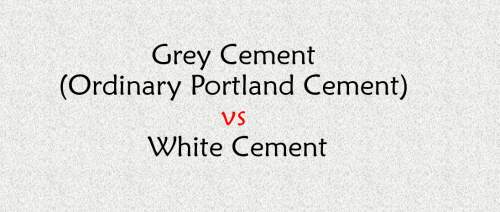Cement is a very important binding material in construction. Ordinary Portland cement is the most commonly used cement. Typically it is gray in color. White Portland cement is a special type of cement which is used for specific construction purposes.
Grey Ordinary Portland Cement and White Cement

Grey cement (Ordinary Portland Cement) and white cement have several differences. Sources of main differences between grey and white cement are raw materials, fineness, cost, uses, kiln fuel, energy consumption etc.
In the following table, the main differences between grey ordinary Portland cement and white cement are given:
| Sources | Grey Cement | White Cement | |
|---|---|---|---|
| 1 | Raw Materials | Raw materials contain a high amount of Iron Oxide and Manganese Oxide. | Raw materials contain a very little amount of Iron Oxide and Manganese Oxide. |
| 2 | Fineness | Usually less fine than white cement. | Usually finer than gray cement. |
| 3 | Kiln Fuel | Coal, petroleum coke, fuel oil, natural gas. | Oil is used to avoid contamination by coal ash. |
| 4 | Energy Consumption | Low. | High. |
| 5 | Cost | Less expensive. | Expensive than gray cement. |
| 6 | Uses | Construction purpose. Read more: Uses of Cement | Architectural beauty, interior, and exterior decorations, floorings, ornamental concrete products such as idols. Read more: Uses of White Portland Cement |
{adselite}

